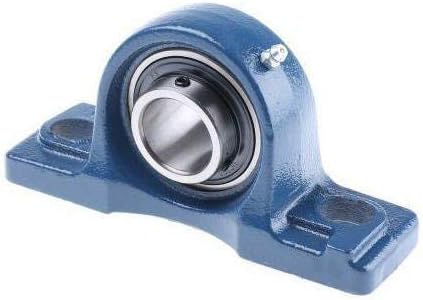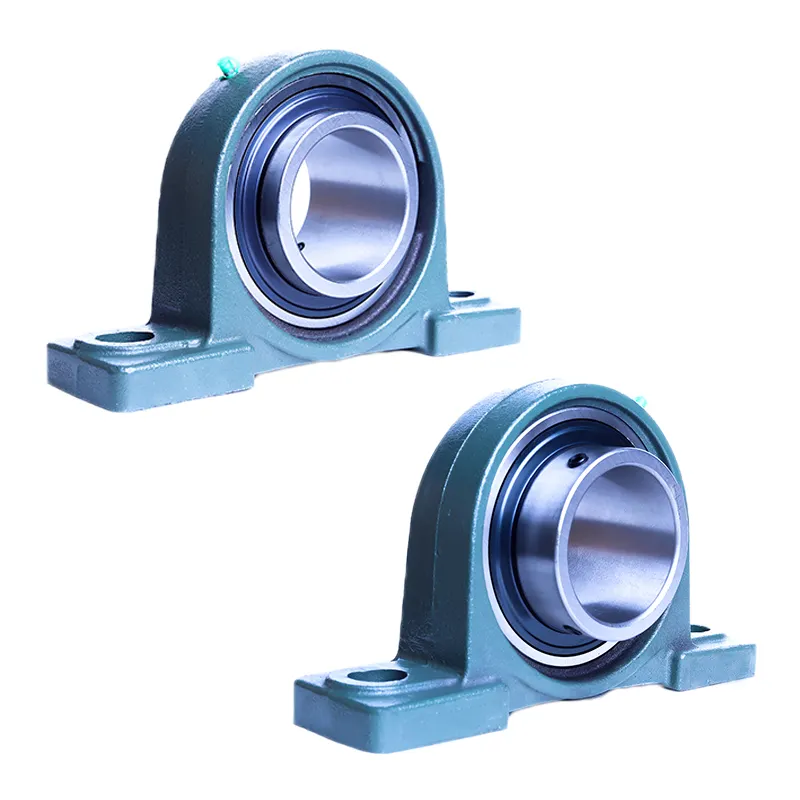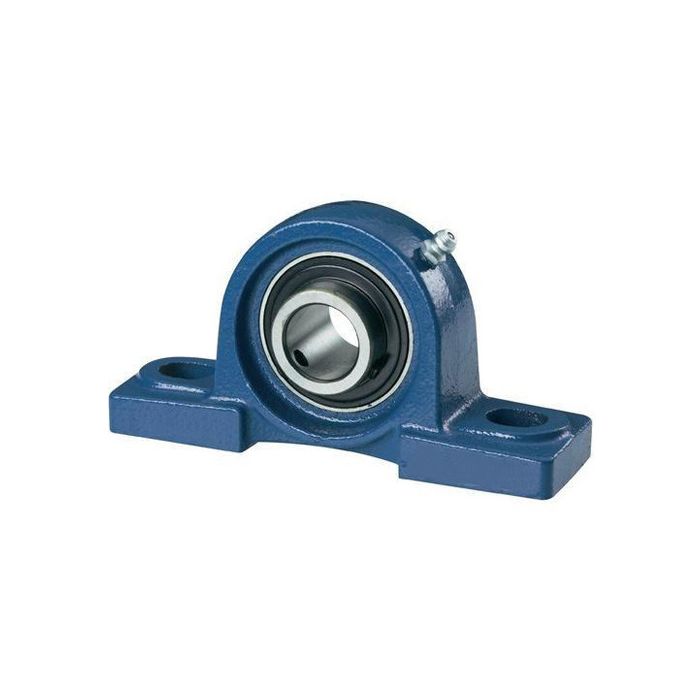
How do I replace a block bearing?
Replacing a block bearing involves a series of steps to ensure proper removal of the old bearing and installation of the new one. Here’s a detailed explanation of the process for replacing a block bearing:
- Gather the Required Tools: Before starting the replacement process, gather all the necessary tools and equipment. This may include wrenches, sockets, a puller or press (if needed), lubricants, cleaning materials, and safety gear such as gloves and goggles.
- Prepare the Work Area: Clear the area around the machinery and ensure a clean and safe workspace. This will make it easier to access the bearing and perform the replacement without any obstructions.
- Disconnect Power and Lockout/Tagout: If the machinery is powered, disconnect the power supply and follow appropriate lockout/tagout procedures to ensure the equipment cannot be accidentally started while you are working on it. This step is crucial for your safety.
- Remove External Components: If there are any external components or accessories attached to the block bearing, such as seals, covers, or locking devices, remove them using the appropriate tools.
- Secure the Shaft: Depending on the design of the machinery, you may need to secure the shaft to prevent it from rotating during the bearing removal process. This can be done using shaft clamps or other suitable methods.
- Remove the Old Bearing: Use the appropriate tools to remove the old bearing from the housing. This may involve loosening locking devices, such as set screws or eccentric collars if present, and applying force evenly to remove the bearing from the shaft.
- Clean and Inspect: Once the old bearing is removed, thoroughly clean the housing, shaft, and surrounding components. Inspect them for any signs of damage or wear that may need to be addressed before installing the new bearing.
- Apply Lubrication: Apply the appropriate lubrication to the housing, shaft, and the new bearing. Refer to the manufacturer’s guidelines for the recommended lubricant type and amount.
- Install the New Bearing: Carefully install the new bearing into the housing, ensuring it is properly aligned and seated. Use the appropriate tools or techniques to secure the bearing in place according to the manufacturer’s instructions. This may include tightening set screws, applying locking devices, or using press-fit methods if necessary.
- Reattach External Components: Once the new bearing is properly installed, reattach any external components or accessories that were removed earlier, such as seals or covers.
- Perform Functionality Checks: Before restoring power or resuming operation, perform functionality checks to ensure the new bearing is functioning correctly. Rotate the shaft manually to verify smooth operation, check for any abnormal noises or vibrations, and confirm that the bearing is properly secured.
- Restore Power and Test: If everything checks out, restore power to the machinery and conduct thorough testing to ensure the replacement bearing is operating as expected. Monitor the machinery closely during the initial period of operation to ensure there are no issues.
It’s important to note that the above steps provide a general guideline for replacing a block bearing. The specific process may vary depending on the machinery design, manufacturer guidelines, and any unique considerations related to the application. Always refer to the manufacturer’s instructions and follow proper safety protocols when performing any maintenance or replacement tasks.

What are the signs of a failing block bearing?
A failing block bearing can exhibit various signs and symptoms that indicate potential issues. Recognizing these signs is crucial for timely maintenance or replacement to prevent further damage to the machinery. Here’s a detailed explanation of the common signs of a failing block bearing:
- Abnormal Noise: Unusual noises coming from the machinery, such as grinding, squealing, or rumbling sounds, can be indicative of a failing block bearing. These noises may occur during operation or when the machinery is under load.
- Vibration: Excessive vibration in the machinery can be a sign of a failing block bearing. If you notice increased levels of vibration during operation, especially in conjunction with other symptoms, it may indicate bearing wear or misalignment.
- Increased Temperature: A failing block bearing can generate excessive heat due to increased friction. If you observe abnormally high temperatures in the bearing housing or around the bearing area, it could be a sign of impending bearing failure.
- Irregular Operation: Changes in the smoothness or regularity of the machinery’s operation, such as intermittent or irregular motion, can be a result of a failing block bearing. This can manifest as jerky movements, sticking, or hesitation during operation.
- Loss of Lubrication: Insufficient or loss of lubrication can lead to bearing failure. If you notice signs of inadequate lubrication, such as dry or discolored lubricant, or if the bearing is running dry, it can accelerate wear and contribute to bearing failure.
- Visible Damage: Physical damage to the block bearing or its components, such as cracks, dents, or corrosion, can indicate a failing bearing. Additionally, if you observe excessive play or movement in the bearing, it may be a sign of wear or damage.
- Inconsistent Performance: A failing block bearing can result in inconsistent or reduced performance of the machinery. This may include decreased speed, reduced load-carrying capacity, or compromised precision in applications that require high accuracy.
- Increased Friction: If you notice an increase in friction or resistance when rotating or moving the machinery by hand, it may suggest a failing block bearing. Difficulty in turning the shaft or a feeling of roughness can indicate excessive wear or damage in the bearing.
It’s important to note that these signs can also be indicative of other issues in the machinery. Therefore, a thorough inspection by a qualified technician or engineer is recommended to accurately diagnose the problem. Regular maintenance, including visual inspections and monitoring of operating conditions, can help identify early signs of bearing failure and allow for timely intervention.
If you observe any of the mentioned signs, it’s crucial to address the issue promptly to prevent further damage to the machinery. Timely maintenance or replacement of failing block bearings can help ensure the continued reliable operation of the machinery and prevent costly breakdowns.

How is a block bearing different from other types of bearings?
A block bearing, also known as a pillow block bearing, has several distinct characteristics that differentiate it from other types of bearings. Here’s a detailed explanation of how a block bearing differs from other bearing types:
1. Housing Design: One of the key differences of a block bearing is its housing design. A block bearing features a solid block-shaped housing that provides support and stability to the bearing insert. This housing is typically made of materials like cast iron, stainless steel, or thermoplastics, and it often has mounting holes or slots for easy installation onto a support structure.
2. Mounting: Block bearings are designed to be easily mounted and secured onto a support structure, such as a frame or housing. The housing of a block bearing has mounting holes or slots that allow for straightforward attachment using bolts or fasteners. This mounting design provides stability and ensures that the bearing remains in place during operation.
3. Bearing Insert: Another distinct feature of a block bearing is the bearing insert it uses. The bearing insert in a block bearing is typically a ball bearing or a roller bearing. These bearing inserts are designed to facilitate smooth rotational motion of a shaft or rod while providing support and load-carrying capacity.
4. Application: Block bearings are commonly used in applications where there is a need to support and guide a rotating or oscillating shaft. They are widely utilized in various industrial machinery and equipment, such as conveyors, fans, pumps, agricultural machinery, and mining equipment. The block bearing’s robust design and ability to handle radial and axial loads make it suitable for these types of applications.
5. Versatility: Block bearings offer versatility in terms of size, configuration, and design. They are available in different sizes to accommodate various shaft diameters and load requirements. Additionally, block bearings can be used in different mounting positions, such as horizontal, vertical, or inclined, depending on the specific application needs.
6. Maintenance: Block bearings generally require regular maintenance, including lubrication, to ensure optimal performance and longevity. Lubrication helps reduce friction and wear between the bearing components, ensuring smooth operation. Many block bearings feature grease fittings or seals that allow for easy lubrication and help protect the bearing from contaminants.
While block bearings have their unique characteristics, it’s important to note that there are many other types of bearings available, each with its own advantages and applications. Some common types of bearings include deep groove ball bearings, cylindrical roller bearings, tapered roller bearings, and spherical roller bearings. The selection of the appropriate bearing type depends on factors such as load capacity, speed, operating conditions, and specific application requirements.
By understanding the differences between various bearing types, it becomes easier to select the most suitable bearing for a particular application.


editor by CX 2024-05-06